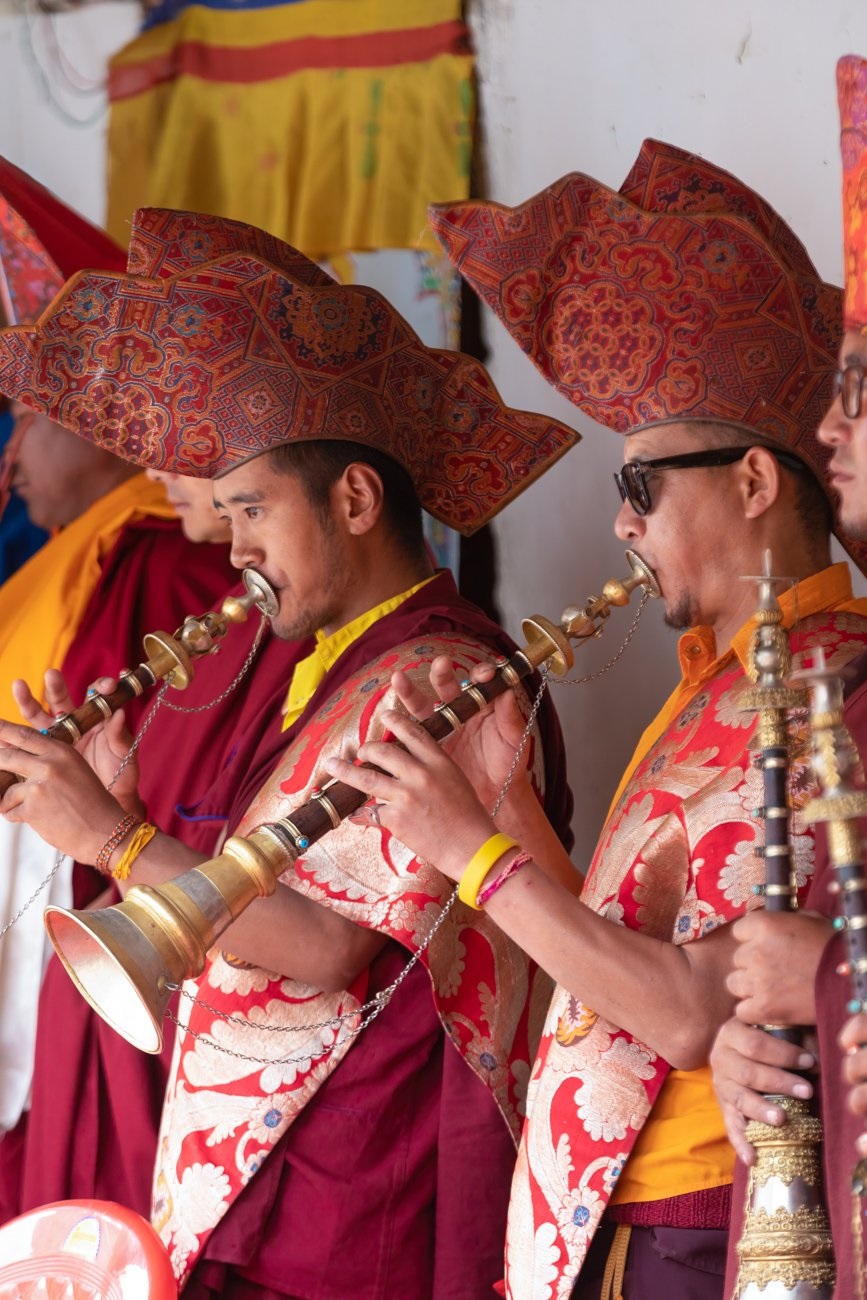
The Ultimate Travel Guide for Ladakh by Delighted Journey is a remote place belonging to a northern state of India, which for some reason does not receive as many visitors as the rest of the country. Why will it be? I was wondering. This region is somewhat far away and difficult to access. People generally don’t know about it. It doesn’t sound like it. Because? Perhaps it has to do with the fact that here you cannot enjoy the Hindu culture, which is one of the main reasons to go to India.
Well then what’s up? Ladakh is a region of the Himalayas inhabited by authentic Tibetans. Some call it the little Tibet, and for the same Indians, it is the favorite place to spend the holidays in India. Because? India is a country where chaos, over-population, traffic and stress reign, and Ladakh is a place that differs from all these stereotypes. In Ladakh you breathe calm and silence; And combined with the sublime landscape and the Tibetan culture that inhabits every corner, sometimes you even forget that you are actually in India.
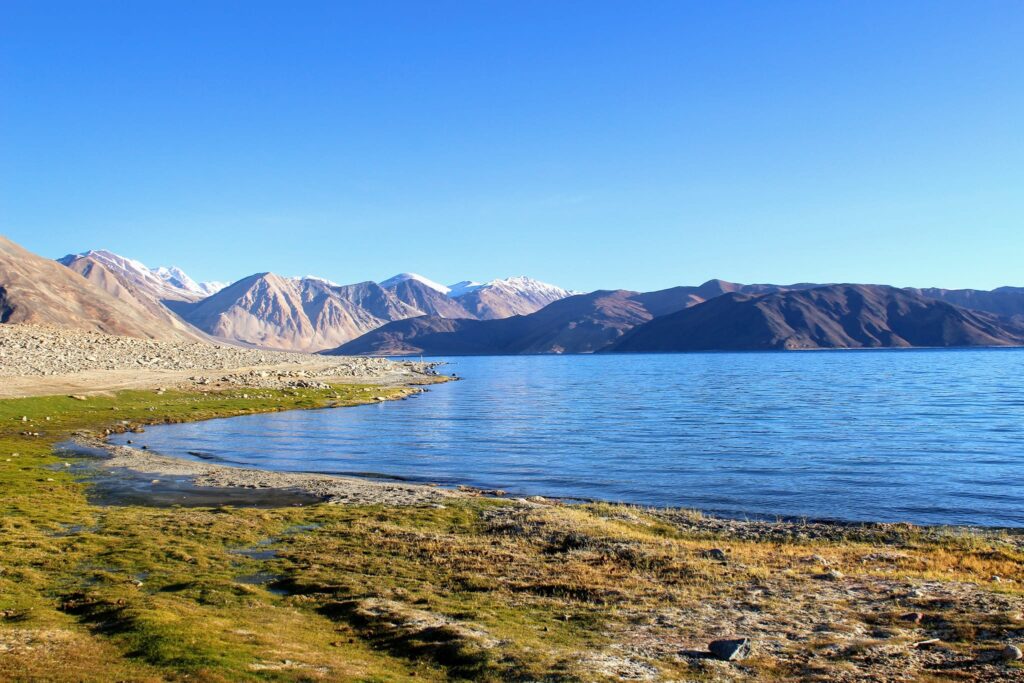
Top things to do and see in Ladakh
By The Ultimate Travel Guide for Ladakh Compared to the rest of India, Ladakh is rather a small region, but actually, its total area is twice that of Switzerland. However, its desert and gigantic mountains occupy most of it. In my opinion, the top 10 things to do and see in Ladakh are:
Leh
If you decide to arrive in Ladakh by plane, the capital will be your first point of contact. Leh is a magnificent place to explore. Its most emblematic building is the Leh Palace, which is undoubtedly worth a visit. You can also watch the sunset from the Shanti stupa, visit the Tibetan refugee markets, or simply wander through its narrow streets. In Leh, you’ll get a first taste of what Tibetan culture is like.

Nubra Valley
An immense sea of sand dunes in the middle of the Himalayas. Can you believe it? The Nubra Valley is literally a desert similar to those of the Arabian Gulf, except that it is located 4,000m above sea level, is surrounded by the Himalayas and grazes on the hairy two-humped camels. time of one The Tibetans say that the origin of this desert comes from Tethys, a sea from whose depths the Himlayas arose.
Nubra Valley
An immense sea of sand dunes in the middle of the Himalayas. Can you believe it? The Nubra Valley is literally a desert similar to those of the Arabian Gulf, except that it is located 4,000m above sea level, is surrounded by the Himalayas and grazes on the hairy two-humped camels. time of one The Tibetans say that the origin of this desert comes from Tethys, a sea from whose depths the Himlayas arose.
Khardung la Pass
This is nothing more and nothing less than the highest busy highway in the world. It connects Leh with the Nubra Valley and reaches over 5,600m.
However, this northern-Tibetan-Indian region holds another altitude-related record, which is none other than the highest road in the world, Khardung-La.
Khardung La is a busy highway that sits 5,602 meters (or 18,380 feet) above sea level. By busy I mean that not only bicycles pass through it, but also cars, motorcycles and even cargo trucks.
Where is it located?
The second highest highway in the world is located about 40km north of Leh, the capital of Ladakh, one of the 3 provinces of the Indian teritory Ladakh. The pass was officially opened to the public in 1988 and connects the capital Leh with the Nubra and Shyok valleys. The highway is of high strategic value, since it allows supplies to be sent along the Siachen glacier, an area in conflict because it is on the border with Pakistan.
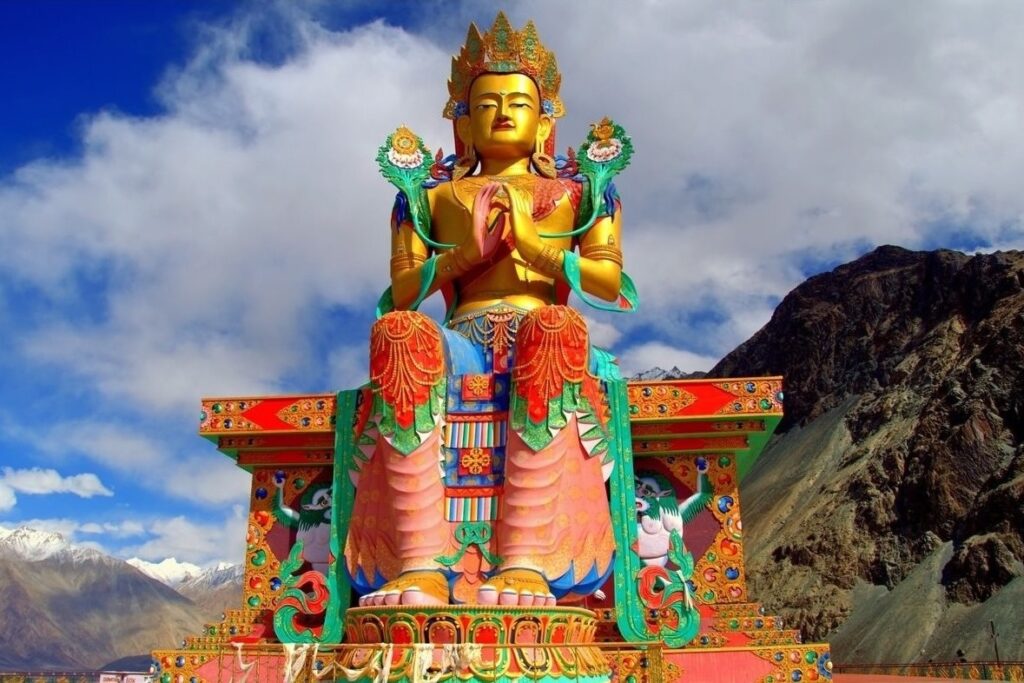
Pangong Tso Lake
A tremendous lake located at 4,350m altitude. This lake is split between India and China, and travelers flock to it for trekking and admiring the incredible scenery.
Chemrey Gompa
In my opinion, the most beautiful gompa in all of Ladakh. Perfectly tailored and built on top of a pointed hill, it impresses just to look at it.

Tso Moriri Lake
The highest altitude lake (4,522m), and one of the most beautiful because it is surrounded by vast green meadows and snow-capped peaks.
Thiksey gompa
Although it is probably one of the most touristy, this fortification is almost like a small city. It has shops, restaurants, a hotel and is inhabited by a huge community of Buddhist monks.

Hemis gompa
If you go to Ladakh in July, you cannot miss going to visit the Hemis Monastery. During this month a famous festival takes place in which Tibetans parade with masks. One of the most sacred rituals in all of Ladakh.
Hiking
Walking through its peculiar Himalayas, is one of the best experiences of traveling to Ladakh. There are many treks that adapt to any traveler. For more information, consult the Trekking section of this same guide.

Alejarse de la rutas turísticas
Ladakh de por sí ya es una región insólita poco frecuentada por turistas. Sin embargo, en temporada alta (julio y agosto), algunos lugares se pueden llenar de multitudes. Sitios como Leh, las famosas gompas de Thiksey y Hemis, el paso de Khardung La y el valle de Nubra, son probablemente los más vistados.
Si quieres evitar a los turistas, una manera de hacerlo podría ser dirigite a los lagos de Pnaging Tso y Tso Moriri. Practicar senderismo sería también una buena opción, incluso en concurridos trekkings como el valle de Markha. Por último, si te decides por alquilar un vehículo, conducir por las carreteras desérticas de Ladakh es toda una experiencia, a parte de que hay un sinfín de pueblos sin explorar en los que te puedes parar. Te sugiero que conduzcas hasta Chemrey y explores sus alrededores. Por cierto, si decides visitar las famosas gompas de Thiksey y Hemis, mejor ve por la tarde después de comer y así evitar las muchedumbres.
The people: the Ladakhis
From an ethnic and linguistic point of view, the Ladakhis resemble the Tibetans. During the 18th century, a member of the Tibetan royal family decided to annex Ladakh, and as a consequence, hundreds of Tibetans came to settle and plant their roots. Furthermore, in recent decades, after the Chinese invasion, thousands of Tibetans have been coming to Ladakh in order to find refuge. The Ladakhis are friendly people, always ready to help and start a conversation.

Physically, the Ladakhis are not at all like Indians and if you ask them, they will tell you that they do not feel either. It was India’s independence day when I was in Ladakh. In India, the day is celebrated with enthusiasm, but in Ladakh it turned out to be a normal day like any other. Yes, there were a couple of flags hanging from a balcony, but that’s it. They told me that apart from their passport, they have nothing in common with the Indians. However, do not be mistaken and think that the Ladakhis do not get along with the rest of the country. In fact, they are very happy with the Indian government, as it gives them a high degree of autonomy and freedom.

Language
Ladakhi, a dialect of Tibetan, is the most widely used language in the region. Hindi and Urdu are also spoken by most of the population, especially the educated.
Some Tibetan words and phrases that might be useful to you:
Hi- Julley
How are you?-: Khamzang ina-le?
Thanks-: Julley – Same as “Hello”
You’re welcome-: Julley
Sorry- Gongspa salazad
With permission-: Gongspa salazad
Religion
As most of the population is of Tibetan origin, Tibetan Buddhism is the dominant religion, which in turn plays a vital role in the lives of the locals. According to what a monk I met told me, traditionally, families give at least one of their children to Buddhism. The Buddhist faith can be seen represented in every corner of Ladakh, monasteries and villages, and this is undoubtedly one of the best things about traveling to Ladakh. Islam is also practiced by a significant number of the population, especially in the areas near the Kashmir Valley.
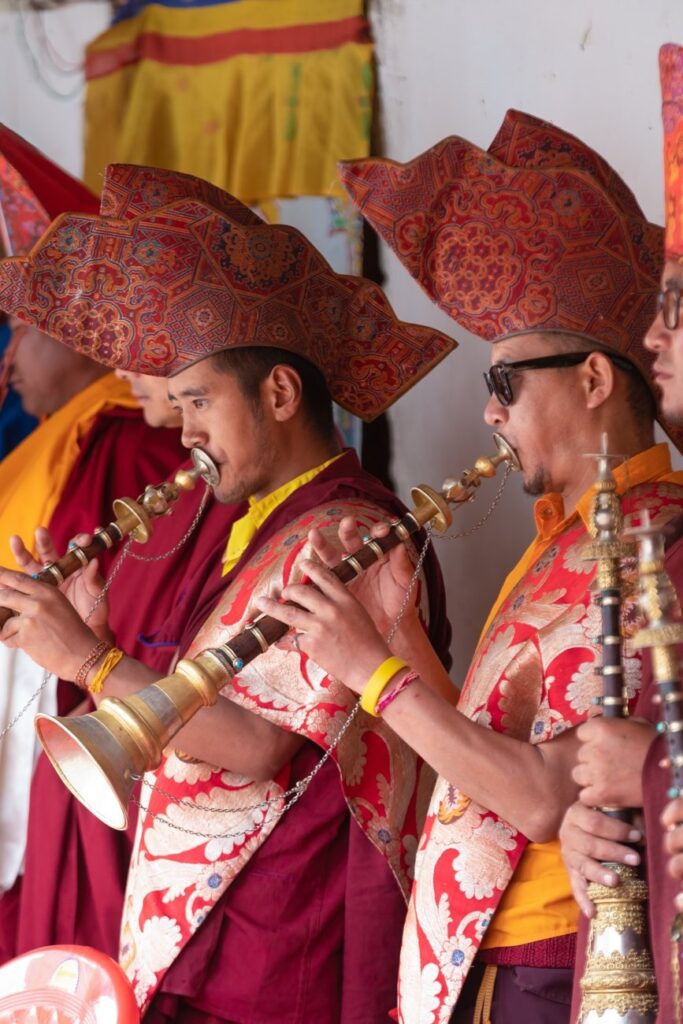
Tibetan Cuisine
The peculiar food of Ladakh has a special point, and for this reason I thought that it deserves a separate post. Click here to find out what Tibetan cuisine tastes like.
Alcohol
Unfortunately ours, in Ladakh alcohol is a sensitive subject, and sometimes it can be hard to find. Apparently, the population has suffered from high degrees of alcoholism, and today it is quite regulated. You can buy, but only in a couple of places. Bars and restaurants have to pay large amounts of tax and most cannot afford it. However, I ask you to calm down. Don’t do drama yet. There are plenty of restaurants that serve it illegally (or off the record as they like to say). They bring it to you inside brown paper bags, and serve it to you in a coffee cup.
Usually they only serve beer. Two brands are available: King Fisher, a 5.5% proof beer produced in Bangalore. Then there is God Father, which is the local beer produced in the state of Kashmir. The label says it has 5.5% alcohol, but when I tasted it I didn’t quite believe it, as it was too mild. Later I realized that the label actually says: 8% maximum. Strange right?
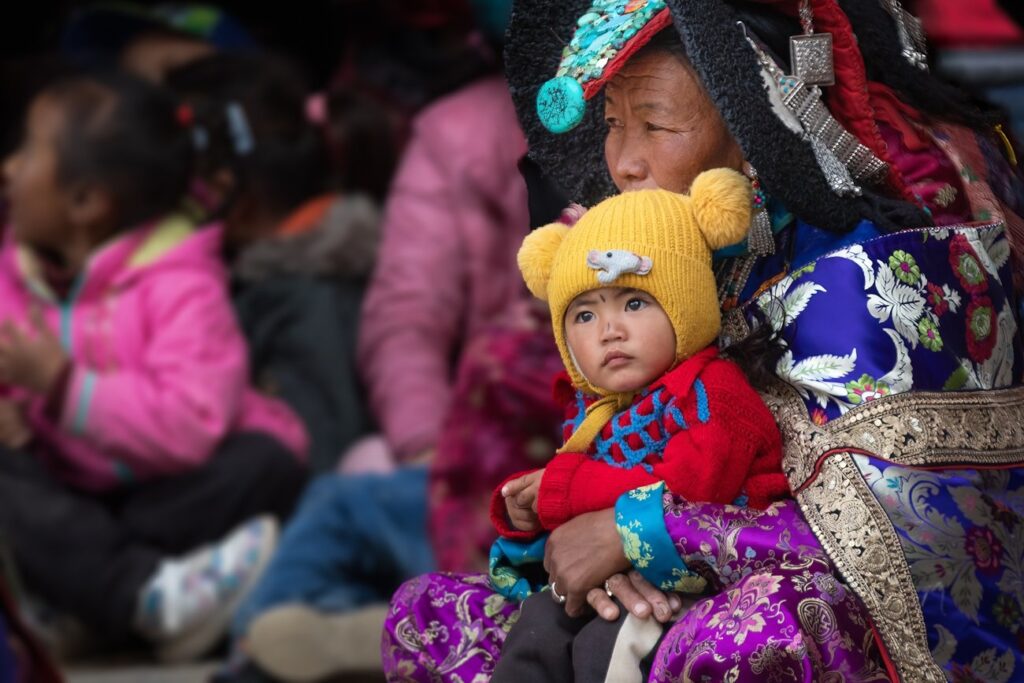
How much will it cost you to travel to Ladakh?
Although Ladakh is a relatively cheap place to travel to, Indians say that it is the most expensive place in all of India. Let me summarize what the cost of the most typical things is.
Accommodation
In my life I have seen as many guest houses (local houses turned into small cheap hotels) as I saw in Leh. There is one in every nook and corner. This is your main source of income. Keep in mind that the prices that I describe below are referring to the high season.
Cheapest option: You can find very basic rooms for 500-800 rupees per night. Normally, they are guest houses that do not have internet, and offer you a thin mattress and a sink. Nothing else. Some smell musty. However, many of them have a pleasant garden where you can read, relax or have breakfast. Some of these hotels can be found on Karza street, located 5 minutes walk from the center. I don’t think you need to book in advance. I personally found one quickly in the middle of August.
The most comfortable option: If you prefer to sleep in more comfortable rooms, there are many guest houses that offer rooms with thick mattresses and Wi-Fi and cost around 1,600 rupees on average.

Meal
The restaurants where the locals eat, a meal costs between 100 to 150 rupees. In the more touristy (and hygienic) places, a meal costs 400 rupees, depending on what you order. Water costs 30 rupees and coffee 50.
Transport
Private Taxi to other places in Ladakh: Prices vary depending on where you are going. For example, round trip to Nubra valley costs 11500 rupees. Khardung La costs Rs 3,500 and Pnagon Lake costs Rs 13,500. The prices are standard and set by the Ladakh government. They shouldn’t charge you more. By the way, keep in mind that all trekking agencies have a shared taxi service and they help you find other travelers with whom to share the taxi.
Shared Local Taxis: Using local transportation is the cheapest way to get around. For example, going from Leh to Thiksey (20km) costs 900 rupees. For more information, consult the How to move section of this same guide
Rent a scooter: The price per day is 1500 rupees. By the way, gasoline costs 95 rupees per day.
Rent a motorbike: Large motorbikes cost Rs 2,000 per day. If you plan on renting it for a long time, I met a guy who for a whole month’s rent, got it down to 1500 a day.

Entrance Tickets
Gompas cost either nothing or 50 rupees to enter. The only expensive ticket I ever paid was when I visited the Leh Palace (300 rupees).
Do I have to tip?
You are not forced to tip, but some tourism professionals might expect it. A local told me that guides and porters tend to expect Rs. 200 to 500 a day in tips. But I insist that you are not obliged to do so.
Trekking in Ladakh
Going trekking through the desert and remote mountains of Ladakh is one of the best trekking experiences you will ever have. And this is not my humble opinion, but that of expert mountaineers who said that the Ladakh Himalayas in particular are the wildest, most impressive and most dramatic you will ever come across.
What trekking should you choose?
Very good question. First you should ask yourself: How many days do I have to go trekking? Do I want to sleep in a tent or in the house of locals? I want to go independently or with a guide? Do I prefer to see Tibetan culture, or only landscape and nature?
There are a large number of treks and routes that adapt to any type of traveler. When you arrive in Leh, you should go to each agency and ask for all the available options and details. However, here is a brief summary of the most popular treks in Ladakh:
Markha Valley (4 to 9 days): The most flexible trek of all. Because? Because it has both Tibetan culture and incredible Himalayan landscapes. Some sections are especially hard. The highest point is at 5,200m. Depending on where you start, you can finish it in as little as 4 or 5 days. The Markha valley could qualify as one of the most traveled treks, but still it is much more authentic than any of the treks offered in Nepal.

Nubra Valley (3 to 6 days): This journey is not usually very crowded. There is no civilization at all, so you have to bring your own food and camping equipment.
Rumtse to Tsomoriri (8 days): The favorite trekking of many guides. It is characterized by arid plains, nomads and impressive lakes. The most famous are Tsokar and Tso Moriri.
Spituk to Matho (3-4 days): One of the shortest treks and perfect for those looking for something more moderate and easy. The hike passes through the Hemis National Park. Snow leopards live in the park.
Lamayuru ta Darcha Trek (18 days): One of the longest treks and one of the richest from a cultural point of view. It passes through a large number of Tibetan villages and monasteries. Among the most famous is Phuktal, a gompa literally built on a waterfall.

Do you need a guide or agency?
First of all, let me make one thing clear: there is better to book the trekking & safari tour in advance before you arrive in Ladakh. Booking it in advance is much cheaper.
Second, you may be wondering: Do I need a guide? Or can I do it on my own? This mainly depends on your level of experience. For example, I am not a beginner, but I am not an expert either. If I were to go on a 10-day hike with a guide, take a rented camping gear, and have to cooking gear. On the other hand, if they make sure that the trekking passes through towns and the route is relatively easy to follow (the Markha Valley for example), then I would be fully capable of doing it independently.
My suggestion !! Trekking agencies are very helpful. They do not hesitate to provide you with any type of information. Without any problem, you can ask them if it is feasible or not to do it independently. They will give you the itinerary and all the details. When you have all the information, make your own judgment and decide.

Getting Around: Transportation
Public transport as such does not exist in Ladakh. The main forms of transportation are:
Private Taxi
In Leh, taxi is the only way to get around. Keep in mind that Leh is built on a hill and the distances are not that they are very short to say. If you arrive in Leh by plane, you will need to acclimatize before you start wandering its streets and hills. If your guest house is near the center, then fine. But if not, during the first day, I recommend taking a taxi every time you go back to your guest house. Trust me, I know from my own experience. My first day, I was going up and down there, until the end of the day my head hurt like hell.
To go to any destination outside of Leh, trekking agencies or guest houses can arrange a taxi for you. The prices are standard, so there is no room for negotiation. If you don’t have anyone to share it with, all agencies offer the service of sharing it with other tourists. They simply look for other occupants for you. The downside is that it can take time to find someone else. I suggest you ask as many agencies as possible, until you find a taxi that is full.
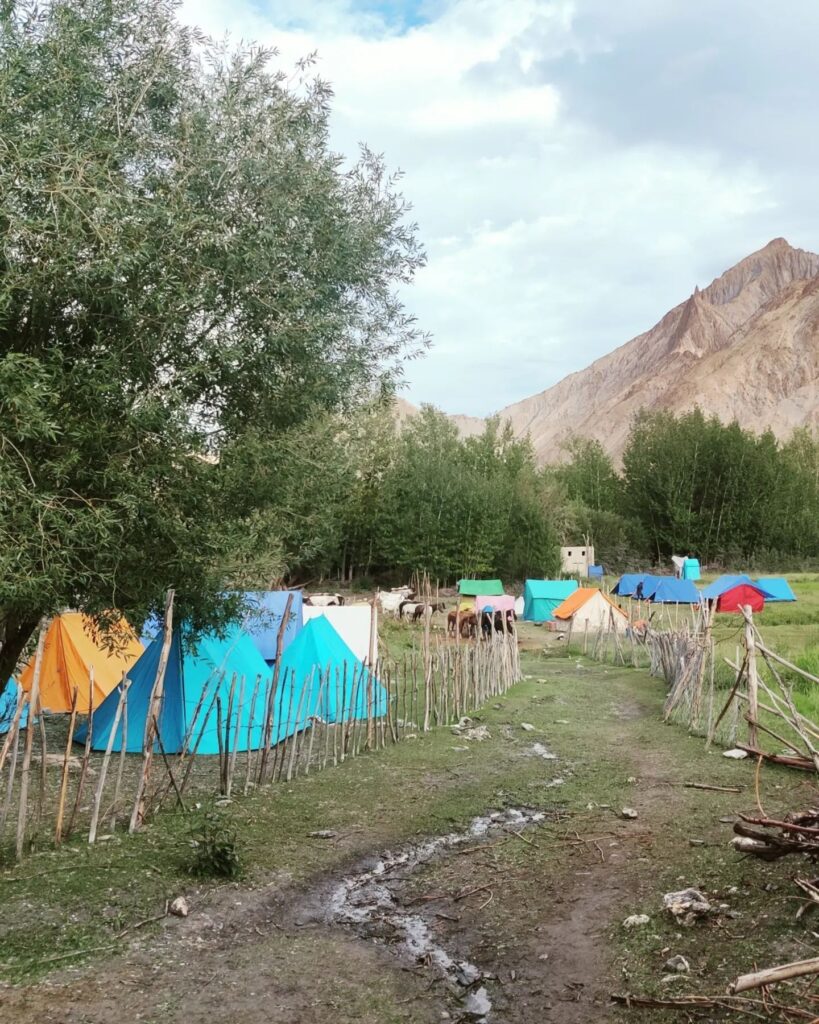
Shared local taxi
Ladakh’s local transport consists of small vans where everyone travels in a tight squeeze. It is the cheapest way to get around and can be found practically everywhere. In Leh, there is a station right at the entrance of the city. They are quite effective if your goal is to go to some other town or gompa. The bad thing is that they do not usually drive to remote tourist spots, such as Nubra Valley or Khardung La.
Rent a vehicle
In Leh, you can rent any type of vehicle, from 4×4, to motorcycles of all sizes, small cars, etc. I was traveling by scooter. But if you want to travel far, then you should rent one of the big bikes that are found everywhere.

Altitude Sickness
Catching altitude sickness is one of the most common problems among travelers who come to Ladakh, especially those who arrive by plane. Leh is situated 3,500m above sea level. If you arrive by air, the change in altitude is too dramatic and your body doesn’t have time to get used to it. Almost everyone I met had a headache for at least the first two days. The first day you arrive in Ladakh rest and do not make any effort. Otherwise you will get sick.
Is it safe to travel to Ladakh?
Yes, Ladakh is a safe place to travel. The state of Kashmir has been an area of great turbulence since India gained its independence in 1947. Why? Because it has been in eternal dispute with Pakistan and since then there have been multiple violent protests and insurgencies.
However, Ladakh has always kept away from such conflict. There have never been any signs of terrorism or violent protests. The tension has mainly taken place in the Kashmir valley, located in the western part of the state, on the border with Pakistan.
How to get a visa?
To travel to Ladakh, a standard Indian visa is required. You can obtain a 30-day visa by filling out the form in the attached link:
https://indianvisaonline.gov.in/evisa/tvoa.html
For most nationalities, you have to pay $45 (except Argentina, which is $30). Once you have sent the payment, the visa takes less than a day to be received.
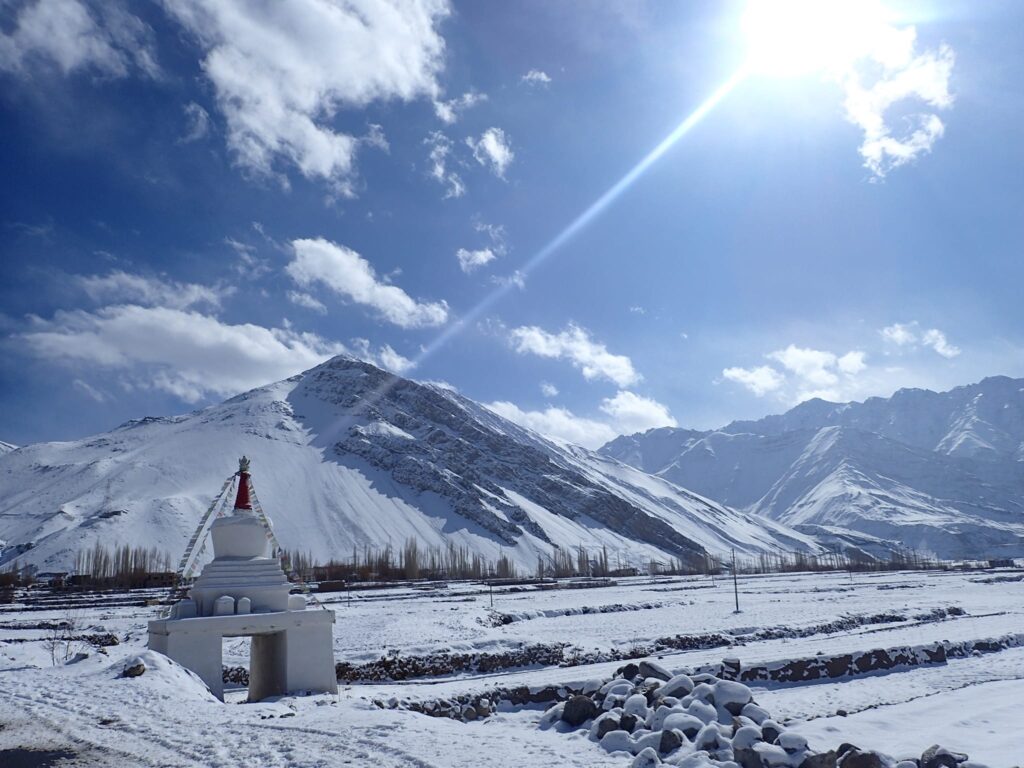
When to go: the weather
Summer (June – mid September): Summer is the peak season in Ladakh. In the day, the sun is strong and it is hot. At night, the temperatures drop and it is more pleasant. The snow has completely melted, except for the highest peaks. Without a doubt, this is the best season for hiking.
Spring (April – May) and Autumn (mid September – November): The snow is beginning to melt and the days are beginning to be pleasant, although the nights are still cold. Restaurants are starting to open (or close in the fall) and some mountains are ready to be climbed. The best thing about this season is that you will hardly see any tourists.
Winter (November – March): Ladakh is completely covered in snow and temperatures are always below 0 degrees. The roads to Ladakh remain closed, which means that the only way to access it is by air. All restaurants and guest houses are practically closed. You can do a couple of treks that go over a frozen lake, but otherwise, hiking is not recommended

How to get
By Air
There are daily flights from Delhi and Mumbai. The landing in Leh is one of the most memorable ones I could ever remember. You basically fly over the Himalayan mountain range, until you land over the Indus Valley.
By Road
Reaching Ladakh by land is only possible between June and October. The rest of the year, the roads remain closed. There are 2 main places to come from:
Srinagar: Located 434 from Leh, the road is a journey in itself because it passes through 3 high altitude passes: Zozi La (3528m), Namki La (3815m) and Fotu La (4108m). Everyone says that it is a unique experience. The landscapes are dreamy. The bad thing is that the trip can last up to 24 hours, but usually the bus stops halfway to spend the night.
Manali: This is the second route, and instead of coming from the west, you come from the south. Manali is 479 km from Leh. The road crosses the Tag La pass, at 5,300m altitude.
Cash, credit cards and ATMs
In case you were wondering, in Leh I counted a total of 5 different ATMs. Still, I wouldn’t be too confident in how it works, so bring extra cash. Except in expensive hotels, paying with a card is not possible.
Money Changer
In Leh, there are several exchange offices and they usually stay open until at least 10 pm. The change is usually good. Outside of Leh, change is more difficult.

Electricity / Plug
220V – 50Gz

Internet
The internet signal is extremely bad in Ladakh, even in expensive coffee shops and hotels. The internet comes and goes. You will not be able to connect every day. By the way, outside of Leh don’t even dream of finding a connection.


